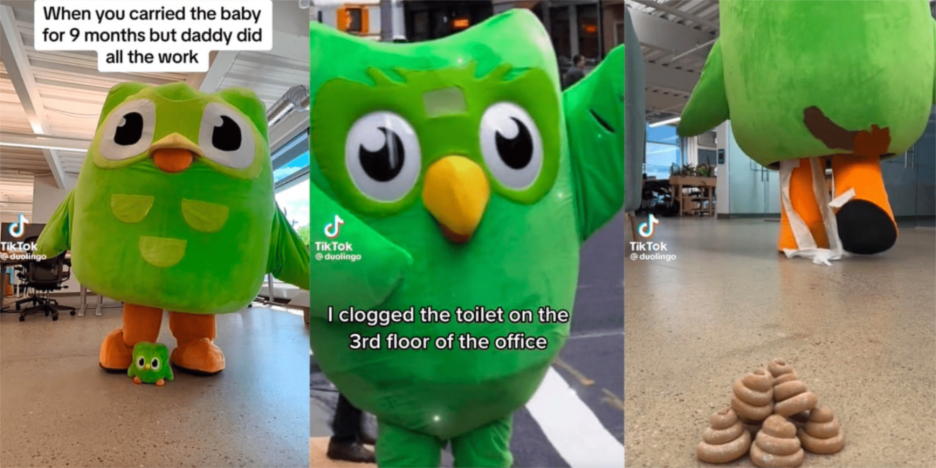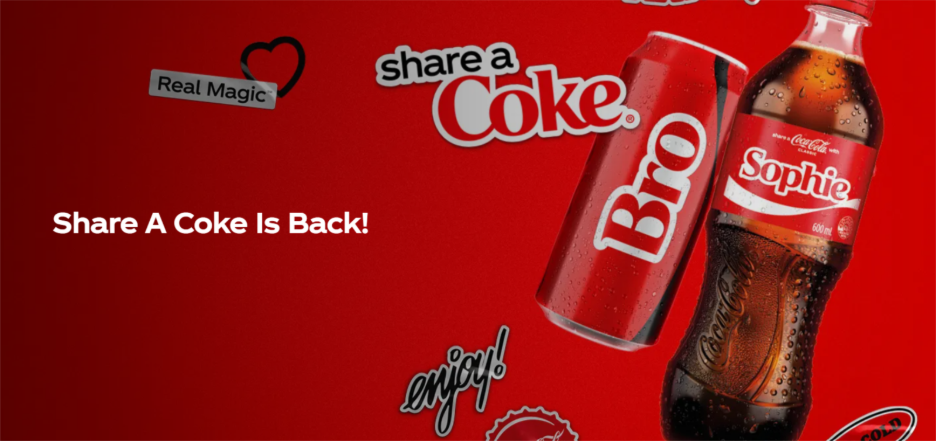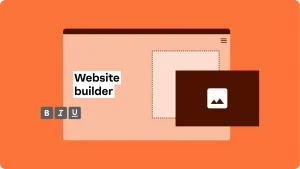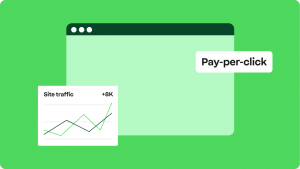Key takeaways:
- Content marketing helps small businesses grow by building trust and guiding customers toward a purchase without relying only on ads.
- A clear strategy keeps your content focused. Knowing your audience, setting goals, and planning distribution makes your efforts more consistent and effective.
- Repurposing ideas, using email, and updating older content are practical ways to make content marketing easier to manage.
If you’ve struggled to get your business noticed online, content marketing offers a smarter, more sustainable way to reach your audience, build trust, and show the value of your brand.
And businesses know it works. In fact, 82% of companies use content marketing to increase their reach, returns, and increase sales rate. It’s now one of the most widely adopted marketing strategies worldwide.
Let’s break down what content marketing really is, why it matters, and how it works across the customer journey. You’ll also learn how it differs from social media marketing, what a solid strategy looks like, and practical tips small businesses can follow to make it work.
What is content marketing?
Content marketing is a type of marketing strategy that focuses on attracting and keeping customers through valuable, relevant, and consistent content. Instead of just selling a product or service, you give people useful content when they’re looking for answers, tips, or solutions.
The goal isn’t only to grab quick attention. Sharing helpful content at the right time helps strengthen relationships, keeps your brand in mind, and builds long-term trust and credibility.
This strategy might sound modern, but this was made popular centuries ago. As far back as 1732, Benjamin Franklin published Poor Richard’s Almanack to promote his printing business while offering readers practical advice.
In 1895, John Deere launched The Furrow, a magazine that helped farmers improve their work while building trust in the brand.
A few years later, in 1904, Jell-O gave away cookbooks full of recipes using its product to boost sales.
These examples show that brands have long used useful content to connect with people. Today, the same approach applies through digital formats that reach wider audiences faster and more effectively.
Types of content marketing
Content marketing can take many forms, depending on how you want to reach your audience. Here are some common types:
- Blog posts. Articles on your website that boost visibility, answer customer questions, and build credibility.
- Offsite articles. Guest posts or contributions to external sites that extend your reach and introduce your brand to new audiences.
- Videos. Visual content that can explain, demonstrate, or share stories, whether short clips or longer tutorials.
- Podcasts. Audio episodes that cover topics your audience cares about, giving them a way to learn while multitasking.
- Infographics. Visual breakdowns of data or processes that make complex information simple and easy to share.
- User-generated content. Photos, reviews, or videos created by customers that add authenticity to your brand.
- Case studies. Stories that show how real customers used your product or service to solve a problem or achieve results.
- eBooks. Downloadable guides that cover a subject in more detail, often used to educate and attract leads.
- White papers: Research-driven reports that take a deeper look at an industry issue or solution.
- Webinars. Online sessions, either live or recorded, that let you present information and answer questions in real time.
- Slide decks. Presentations that organize information into clear, digestible slides for easy sharing.
- Templates. Ready-made resources your audience can use, helping them save time while highlighting your expertise.
Why content marketing matters for small businesses
Content marketing gives you a way to grow without depending solely on paid ads or word of mouth. Here’s why small businesses can benefit from it:
- Drive affordable growth
- Build authority and credibility
- Generate qualified leads
- Boost SEO and discoverability
- Increase retention and loyalty
Drive affordable growth
A single article or video can continue to attract visitors for months or years and still deliver the same value even beyond the day you created it.
Ads stop when the budget ends, but content keeps paying dividends. For a small business, that domino effect is one of the most affordable ways to grow.
Build authority and credibility
When you consistently share helpful answers, resources, or advice, customers start to see your brand as the place they can rely on. Over time, that trust positions you as the expert they turn to when it’s time to make a purchase.
Generate lead generation
High-quality content attracts people who are already considering solutions. For example, someone searching for “how much does lawn care cost” and landing on your blog is likely a homeowner ready to invest in that service.
Studies show that 70% of customers would rather learn about a company through articles rather than advertisements. That’s because content reaches people at the right moment, when they’re actively looking for answers and providers.
Boost SEO
Content marketing strengthens your SEO because every useful article, guide, or video description gives search engines more reasons to notice your site.
High-quality content lets you work on the keywords people search for, makes it easier to earn backlinks, and keeps visitors engaged longer.
All these helps you tell Google your site is authoritative. This results in better rankings, more organic traffic, and sets your brand apart from competitors.
But if you’d rather not handle all the technical side yourself, we provide SEO services handled by SEO professionals, who not only support your efforts but also build a strategy around your brand goals.

Increases retention and loyalty
Content plays a big role in keeping connections with your customers alive. One way is through a monthly newsletter that shares new ideas, seasonal offers, or upcoming events.
You can also use tutorials and how-to guides to help them get more from what they’ve already bought and build loyalty with exclusive updates or special perks that show you value their support.
When customers continue to learn from you and see ongoing value, they’re less likely to drift toward competitors. Instead, they stick around, engage more with your brand, and often become repeat buyers or recommend you to others.
Content marketing vs social media marketing
Many people confuse content marketing with social media marketing because both involve publishing and sharing content online. They’re somehow connected, but here’s how they serve different purposes:
| Feature | Content marketing | Social media marketing |
| Goal | Build authority, trust, and long-term customer loyalty by consistently providing valuable content | Foster immediate brand awareness, engagement, and community through two-way interaction |
| Content Types | Long-form formats: blogs, eBooks, white papers, videos, podcasts, infographics | Short-form, visual updates: posts, stories, images, quick videos, reels |
| Distribution | Hosted mainly on a brand’s website, with social platforms or email driving traffic back | Shared directly on social platforms like Facebook, Instagram, TikTok, LinkedIn, or X |
Content marketing and social media marketing work together in harmony. Content gives you the in-depth material, while social platforms spread that material, start conversations, and bring people back to your site.
The interaction you get online also shows you what’s working, so you can refine future content.
You can publish a blog on your site, then share a short video or graphic from it on Instagram or LinkedIn to pull readers into the full piece.
Good content marketing examples
Content marketing has proved to be one of the most effective ways for brands to connect with their audiences. Here are some standout examples that show how it’s done:
- Spotify Wrapped
- Dove’s Real Beauty campaign
- Duolingo’s TikTok
- Red Bull
- Coca-Cola Share a Coke campaign
Spotify Wrapped

Every November or December, Spotify gives users a personalized breakdown of their listening habits from the past year. The feature works because it taps into two things people love: personalization and sharing.
Wrapped turns raw data into a story that feels unique to each listener, and the simple social-sharing design makes it spread quickly across platforms.
This is good content marketing because it creates excitement around the brand while letting users do the promotion themselves.
Dove’s Real Beauty campaign

Dove shifted away from using traditional models and instead featured real people in its ads and videos. The focus on authenticity challenged beauty standards and created an emotional connection with audiences.
By telling stories that felt genuine and relatable, Dove made its brand more trustworthy and memorable. It stands out as strong because it has built lasting brand loyalty through values and storytelling, not just product features.
Duolingo’s TikTok

Duolingo didn’t just post product updates on TikTok. It leaned into internet humor, using its owl mascot in trending skits and memes that made the brand feel approachable.
This engaged with users because the content entertained first, promoted second. This works as good content marketing because it blended naturally into the platform and keeps Duolingo relevant without feeling like traditional advertising.
Red Bull

Red Bull’s content rarely talks about the drink itself. Instead, it produces videos and sponsors events around extreme sports and high-adrenaline activities.
This method worked because the content matches what the brand wants to stand for: energy, adventure, and pushing limits.
It’s an effective content marketing approach because it built an identity bigger than the product, making Red Bull synonymous with excitement.
Coca-Cola’s Share a Coke campaign

Coca-Cola replaced its iconic logo with popular first names on bottles and encouraged people to find and share “their” Coke.
This campaign was popular because it felt personal, sparked conversation, and made customers part of the brand story. It’s a classic example of good content marketing that even people wanted to photograph, post, and share—turning customers into the marketers.
What is content marketing strategy and how does it work?
A content marketing strategy is how you’ll attract, engage, and retain your audience using content. Without it, publishing becomes inconsistent and disconnected from your business goals.
Here’s how you can start your strategy:
- Research your audience
- Set goals and KPIs
- Choose topics and formats
- Plan distribution
- Publish consistently
- Measure and adjust
Step 1. Research your audience
The first step is getting to know your audience. Pay attention to the questions they ask, the problems they run into, and even the exact words they use when they describe them.
You can find these insights in customer emails, reviews, or simple keyword searches. The clearer you are on their needs, the easier it becomes to create content that feels like it was written just for them.
Step 2. Set goals and KPIs
Next, you need to be clear about what you want your content to achieve. Do you want more people to visit your website? More leads to fill out your forms? Stronger loyalty from existing customers?
Pick goals that matter most, then decide how you’ll measure success using key performance indicators (KPIs). These help you track progress, keep your content focused, and stop you from creating for the sake of it.
Step 3. Choose topics and formats
The best topic for your content usually comes from your costumer’s questions. If people keep asking about pricing, write a guide explaining your rates. If they’re looking for how-to advice, record a video demo.
Different formats work for different people: blogs are great for searching, videos are perfect for showing things in action, and newsletters keep you in touch with customers over time. Start with the formats you can deliver well and build from there.
Step 4. Plan distribution
You need to think about how people will find your content. Your website and email list are always good starting points, but don’t stop there.
Break your content into smaller pieces that work on the platforms your audience uses. You could use LinkedIn posts for professionals, short clips on Instagram, or a quick checklist you can share in a local Facebook group.
Step 5. Publish consistently
Consistency is what makes content marketing work. You don’t need to post every day but just pick a schedule you can follow.
It might be one blog each month or a quick video every week. Keep showing up because consistency builds trust with your audience and keeps your brand visible.
Step 6. Measure and adjust
Keep what’s working, improve what isn’t, and don’t be afraid to remove content that no longer serves a purpose. The goal is to keep learning and refining, so your strategy gets more effective.
Content marketing tips for small businesses
Content marketing doesn’t have to be complicated. Focus on smart habits so you can make the process easier and still see lasting results. Here’s how you can get started:
- Keep your best content on your website
- Turn one idea into many pieces
- Use email to keep in touch
- Measure what really matters
- Refresh content that performs well
Keep your best content on your website
Your website should act as the library for valuable content you create. Social media posts disappear quickly in busy feeds.
But a blog, guide, or video on your site can stay visible for months, or even years, through search engines.
This builds a collection of resources people can always come back to, instead of content that vanishes after a few days.
Turn one idea into many pieces
Don’t stop at publishing content in just one format. A single idea can be expanded into a blog, broken into short social posts, turned into a video, or even included in a newsletter.
Repurposing stretches the life of your ideas and lets you connect with people who prefer different ways of consuming content, without creating everything from scratch.
Use email to keep in touch
Email is still one of the most dependable ways to reach your audience. Unlike social media, you don’t have to worry about algorithms deciding who sees your message, it goes straight to the people who asked to hear from you.
A regular newsletter with helpful tips, updates, or offers keeps your brand visible and reminds customers you’re there when they need you.
Having a professional business email makes your brand look more credible. When customers get a message from a branded address instead of a generic one, they’re more likely to trust it and take your business seriously.

Measure what really matters
It’s easy to get caught up in likes and shares, but those don’t always show whether your content is helping your business.
Focus instead on tools that give you useful data like Google Analytics and Google Search Console to show which pages bring in the most visitors and revealing the keywords people use to find you.
Most email and social platforms also have simple reports that track opens, clicks, or engagement.
Refresh content that performs well
Strong content doesn’t always need to be replaced but it can be improved. Revisiting high-performing posts or guides to update the information, improve visuals, or make the explanation clearer keeps them relevant.
This way, you get more results from content that’s already proven itself, rather than constantly starting from scratch.
Make a lasting impact with content marketing
Content marketing helps small businesses grow by building trust and staying connected with customers. Instead of relying on ads, you share useful content that attracts the right people and keeps your brand visible. Over time, this turns casual visitors into loyal customers.
Remember, even small steps, like publishing a blog, sending a newsletter, or updating an old guide, can have a big impact over time. The right tools and services, like our professional business emails, website hosting, and SEO support can help your content reach more people and grow your business.
Start today, share what you know, and watch your small business grow one post at a time.
Frequently asked questions
A content marketer plans, creates, and shares content that attracts the right audience. They also track results to see what works.
For small businesses, this means the owner or team juggling different tasks—writing a blog, posting on social, and checking performance.
Results from content marketing don’t happen overnight. Most businesses see progress in three to six months as content starts ranking and audiences begin to respond.
The payoff is long-term. A single blog or video can keep attracting people for years, unlike ads that stop the moment you stop paying.
The best content marketing tools for small businesses include: Google Analytics (for tracking visitors and see which pages perform best), Google Search Console (for checking what keywords you show up for and how often people click), Canva (for creating graphics, social posts, and simple visuals), and Buffer (for scheduling and managing social posts in one place).
Start with these essentials to make your content easier to create, manage, and improve.




